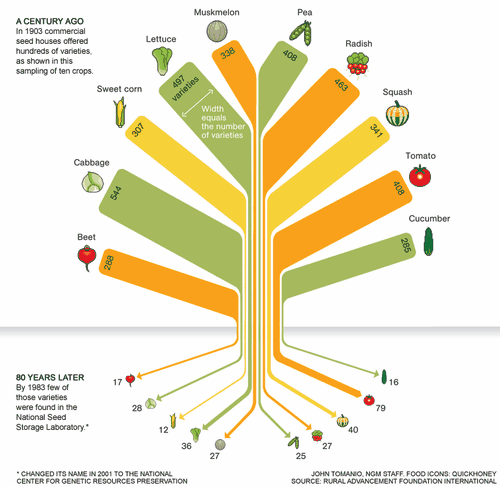
Welcome, Log in
Product Categories
-
Heirloom & OP Seed
- Cool Weather Crops
- Warm Weather Crops
- Beans
- Beetroot
- Brassicas
- Carrots
- Chard
- Corn/Maize
- Cucumbers
- Eggplant (Aubergine)
- Leeks
- Lettuce
- Melons
- Okra
- Onions
- Parsnips
- Peas
- Peppers & Chillies
- Radish
- Spinach
- Squash & Pumpkins
- Tomatoes
- Turnips
- Unusual / Exotic
- Herbs & Spices
- Fruits & Berries
- Value Packs
- View All Seed
- Gift Vouchers
Why grow heirlooms?
Heirloom growers have many different motivations. Some people grow heirlooms for historical interest, while others want to increase the genetic diversity for a particular plant for future generations. Some select heirloom plants due to an interest in traditional organic gardening. Many simply want to taste the different varieties of vegetables, or to see whether they can grow a rare variety of plant.
Before the industrialisation of agriculture, a much wider variety of plant foods was grown for human consumption. In modern agriculture in the industrialised world, most food crops are now grown in large, monocultural plots. In order to maximize consistency, only a few varieties of each type of crop are grown. These varieties are often selected for their productivity, their ability to withstand mechanical picking and cross-country shipping, and their tolerance to drought, frost, or pesticides.
Over the past 80 years, as we've come to depend on only a handful of commercial varieties of fruits and vegetables, thousands of old heirloom varieties have disappeared. It's hard to know exactly how many have been lost over the past century, but a study conducted in 1983 by the Rural Advancement Foundation International gave a clue to the scope of the problem. The study, which included 66 crops, found that we had already lost about 93 percent of our vegetable and fruit varieties which are now extinct.

Image courtesy of National Geographic
So why do we need genetic diversity?
Due to these industrialised agricultural practices, the genetic diversity of the world's food crops is eroding at an unprecedented and accelerating rate. The vegetables and fruits currently being lost are the result of thousands of years of adaptation and selection in diverse ecological niches around the world.
Each variety is genetically unique and has developed resistance to the diseases and pests with which it evolved. Plant breeders use the old varieties to breed resistance into modern crops that are constantly being attacked by rapidly evolving diseases and pests. Without these infusions of genetic diversity, food production is at risk from epidemics and infestations.
Food Security
Unfortunately, when so much of the food supply is dependent on a few single varieties of each species, the food supply is extremely vulnerable if one of the popular varieties turns out to be unusually susceptible to a certain pest or disease. The Irish Potato Famine (1845-1852) was a very good example of what can happen without genetic diversity.
To increase their potato harvest, Irish farmers had come to rely heavily on one variety, the lumper. While the lumper was among the worst tasting types, it was remarkably fertile, with a higher per-acre yield than any other variety (sound familiar yet?). On the eve of the famine, the lumper and one other variety, the cup, accounted for almost all of the Irish potato crop. For about 3 million people, potatoes were the only significant source of food, rarely supplemented by anything else.
In 1845, the fungus Phytophthora infestans (early blight) arrived accidentally from North America. A slight climate variation brought the warm, wet weather in which the blight thrived and much of the potato crop rotted in the fields. As a result, more than a million Irish people died of starvation and disease - about one of every nine. Another one and a half million people emigrated to America.
As we now know, genetic variation helps protect against the decimation of an entire crop by pests, disease, or climate conditions.
Just how dangerous is genetic erosion?
The late Jack Harlan, world renowned plant collector who wrote the classic 'Crops and Man' while Professor of Plant Genetics at University of Illinois, has written:
"These resources stand between us and catastrophic starvation on a scale we cannot imagine. In a very real sense, the future of the human race rides on these materials. The line between abundance and disaster is becoming thinner and thinner, and the public is unaware and unconcerned. Must we wait for disaster to be real before we are heard? Will people listen only after it is too late."
Heirloom gardening is a growing reaction against this trend.
----------------------------------------------------------------------





